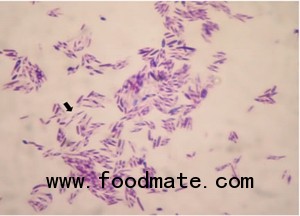 ly suspended milk powder imports from New Zealand after exporter Fonterra discovered a strain of the bacteria that can cause botulism in some of its milk products.
ly suspended milk powder imports from New Zealand after exporter Fonterra discovered a strain of the bacteria that can cause botulism in some of its milk products.Getting food-borne botulism is rare, but ingesting foods contaminated with the C. botulinum toxin can cause fatal illness.
Meat products such as sausages, canned vegetables and seafood have been found to be the most common sources for food-borne botulism.
The most commonly tainted foods are home-canned vegetables with low-acid content, such as asparagus, green beans, beets and corn.
Outbreaks of botulism involving other foods, such as garlic in oil, chili peppers, tomatoes, carrot juice and home-canned or fermented fish, are rare.
Botulism leads to muscular paralysis. Primary symptoms, which develop 18 to 36 hours after consuming the toxin, include blurred vision, slurred speech, drooping eyelids, difficulty swallowing, dry mouth and fatigue.
Infants who have ingested the C. botulinum spores that produce the toxin may appear sleepy, lose their appetite, suffer from constipation and develop weak muscle tone. Left untreated, the symptoms could progress to paralysis of the arms, legs and respiratory system.
The toxin can be destroyed by cooking food 100 C for at least 10 minutes.
The risk of infection is slim, but the death rate is high if a victim does not receive proper treatment quickly.
In the United States, more than 140 cases of botulism are reported each year.
In China, the illness associated with C. botulinum is not covered by the nationwide surveillance system, said Guo Yunchang, a researcher with the China National Center for Food Safety Risk Assessment.
Food safety standards on contaminants are also not available, he said.





